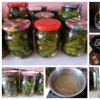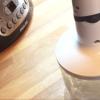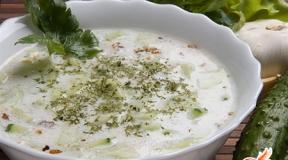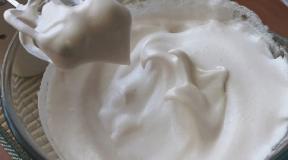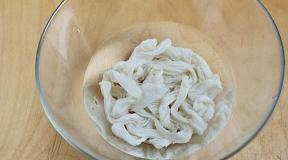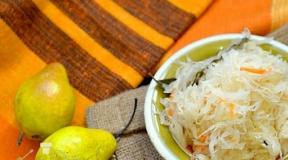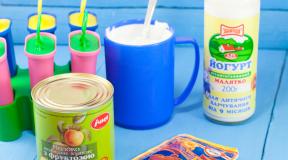How to use turpentine ointment: indications and contraindications. Turpentine ointment. Scope How to use turpentine ointment
Turpentine ointment- an external medicine based on natural components, according to the instructions for use, it is prescribed for the treatment of rheumatism, neuralgia, pain and inflammatory processes in skeletal muscles, bruises, sprains. Also, the drug is effective in complex treatment patients with respiratory diseases, is used as a way to combat head lice, cellulite.
Turpentine ointment is often equipped with universal home first aid kits. This external remedy owes its popularity to a wide range of therapeutic effects, low toxicity and availability. More information about the properties, mechanism of action, dosage regimen can be found in this article.
Pharmacological properties of the drug
The name "turpentine ointment" is derived from the name active substance- gum turpentine, or turpentine oil. The second definition is given based on the analysis of the composition of turpentine, which is a product of the distillation of resin (sap) released from cuts in coniferous trees. The source of sap is mainly pine tree species. In fact, the active substance of the ointment is essential oil containing a set of various organic compounds (terpenes and their derivatives - terpenoids), which have a versatile effect on the human body.
An explanation of what turpentine ointment is for and what heals can be found by referring to the reference book of medicines. According to the WHO-recommended classification system, dividing all drugs according to their main therapeutic use, turpentine ointment is an external medicine intended for the treatment of joint and muscle pain.
The clinical and pharmacological index informs that the turpentine-based ointment is a representative of the group of local irritating drugs vegetable origin... It has all the properties typical of natural products in this category. But this drug is not just an irritating ointment for pain in joints and ligaments. The widespread use of preparations based on turpentine is due to a number of positive properties.
Why else do doctors prescribe turpentine ointment? As the instructions for use dictate, this pharmaceutical product has the following pronounced effect:
- irritating - locally excites the receptor (perceiving) nerve endings, which the skin is rich in, causing reflex reactions and trophic effects;
- warming - increases blood flow, improves tissue trophism in the area of exposure to the drug, causes severe hyperemia, relieves pain, reduces symptoms of inflammation. Warming up and reduction of pain occurs due to expansion blood vessels, the release of endogenous factors - histamine, kinins, endorphins. These active substances regulate many physiological processes and are involved in the pathogenesis of a number of disease states;
- distracting - weakens pain... Pain relief is the result of the interaction of streams nerve impulses entering the central nervous system from skin receptors that signal irritation and burning sensation at the site of exposure medicinal composition, and from affected (diseased) organs and tissues;
- disinfecting (antiseptic) - has a detrimental effect on pathogenic microorganisms living on the skin at the site of application, preventing them from entering the body or preventing active reproduction. Prevention of head lice and getting rid of lice is another non-standard direction, for which turpentine cream can be used;
- mucolytic - helps to liquefy hard-to-separate, viscous phlegm, softens, accelerates its natural excretion from the lungs;
- expectorant reflex type - activates the cough reflex, providing cleansing respiratory tract from harmful factors(phlegm, mucus, pus, dust, other foreign bodies). The effect is achieved due to the irritating local effect of the ointment with turpentine on sensitive areas, which in turn leads to irritation of the cough center in the brain and the launch of a reflex physiological reaction - cough.
The composition of turpentine ointment, release form
 In medicine, only highly purified gum turpentine is used. Medicines based on it are produced by many Russian pharmaceutical companies: Moscow, Tula, Yaroslavl, Kirov factories, Samaramedprom. A medicine with a consonant name is released only in the form of an ointment intended exclusively for external application. By appearance it is a yellowish-white substance, the consistency of an emulsion, odorous.
In medicine, only highly purified gum turpentine is used. Medicines based on it are produced by many Russian pharmaceutical companies: Moscow, Tula, Yaroslavl, Kirov factories, Samaramedprom. A medicine with a consonant name is released only in the form of an ointment intended exclusively for external application. By appearance it is a yellowish-white substance, the consistency of an emulsion, odorous.
The standard dosage of turpentine is 20%. The mixture can be packaged in tubes, glass jars, polymer bottles. The capacity of the container is 25, 50 or 100 g. As auxiliary ingredients, the turpentine ointment contains petroleum jelly, the "Solid-2" emulsifier, and purified water.
How does turpentine ointment work?
In accordance with official instructions The therapeutic effects of turpentine ointment are based on several mechanisms of action. This allows the use of the medication at the initial stages of the disease, at the stage chronic course, in the phases of exacerbation and remission.
Attention: When elevated temperature body, it is forbidden to use turpentine ointment!
For the joints and spine, doctors recommend using turpentine ointment already at the first signs of an inflammatory process or pathological changes. However, you should know that turpentine is not able to cure the root cause of the disease, its main purpose is to alleviate the patient's condition, to delay or block the transition of the disease to the stage of exacerbation. The extended list of indications for use is explained by the ability to have a complex effect on the problem.
What goals are pursued and why doctors prescribe turpentine ointment:
- elimination of pain, swelling, discomfort and heaviness in the legs, muscle stiffness;
- normalization of blood circulation in injured tissues;
- restoration of mobility, an increase in the volume and range of motion in the affected joints, prevention of ligament rupture;
- treatment of "wet" cough, reflex stimulation of expectoration, otparkivaniya, improvement of breathing;
- cleansing the skin, preventing infection;
- acceleration recovery process after sprains of ligaments or muscles, reduction of the rehabilitation period after displacement of the articular bones.
The instruction says that active ingredients the funds quickly overcome the outer layer of the skin, begin to affect the receptors, and penetrate deep into the tissues to the lesion. The effects develop quickly, the patient feels how blood rushes to the treated area, the skin reddens noticeably, there is a slight burning sensation, the pain decreases, a feeling of comfort and warmth appears, the muscles relax.
Indications for admission

For the treatment of joints, turpentine ointment can be used as independent view therapy, and in combination with other methods and drugs. This natural remedy can be a substitute for non-steroidal drugs.
What does the medication help from according to the manufacturer's instructions:
Let us also note the benefits of taking turpentine baths. But it is imperative to follow the doctor's prescriptions and follow the instructions exactly.

Instructions for use
In order not to engage in superficial self-medication, it is important to know what exactly turpentine ointment is intended for, how to apply it correctly. The optimal treatment regimen should be selected by the doctor individually. In general cases for the back, joints, musculo-ligamentous apparatus, the instruction recommends:
- Apply the ointment directly to clean skin in the affected area.
- Cover with a thin layer. The dosage depends on the size of the skin area: on average, 1 procedure will need 0.5-3 cm. A column of ointment.
- Spread with light circular movements until the composition is completely absorbed.
- Multiplicity daily use: 1-3 times.
- After the session, it is allowed to cover the sore spot with a warming bandage.
- Duration of treatment: 10 days maximum. A second course is possible, an obligatory break is 1 month.
The effect of turpentine on children has not been thoroughly studied, therefore, its use in pediatrics is limited. The instructions for use indicate the inadmissibility of using turpentine ointment for the treatment of children under 2 years of age. In other cases (up to 18 years old), procedures can be carried out only with the permission of the pediatrician.
To avoid burns, an allergic reaction in a child or patient with sensitive delicate skin, the instructions for use prescribe to mix turpentine ointment with a neutral fatty cream, preferably for children. In case of a cold, the resulting mixture is usually treated with the feet, back, rubbed upper part chest without affecting the area of the heart and areas around the nipples. Turpentine ointment is warming, so it cannot be used at temperature.
There are other contraindications:
- intolerance of the constituent components;
- dysfunction of the liver, kidneys;
- cuts, other wounds or skin inflammation found in the area of the intended treatment;
- pregnancy, breast-feeding.
Side effects
In addition to the normal side effects of the treatment: burning, tingling of the treated skin and a pungent odor, allergic manifestations, swelling, itching and redness of the skin can be observed.
The cost of turpentine ointment, analogues
In pharmacies, the product is dispensed without a prescription. Store the ointment in a hermetically sealed factory container, in a darkened, protected from moisture place, at a temperature within 25 degrees. The medicine is good for 2 years. Average package price 25 g: 35-40 rubles.
The closest analogues:
- Turpentine oil (pure);
- Monastic collection of turpentine ointment-balm from Diveyevo;
- balm-gel for feet, cream, body gel of the Skipar brand.
You can replace the ointments with turpentine in the composition with other external agents similar in action, such as:
- Camphor oil;
- Moov joint cream;
- warming plaster, Golden Star balm;
- ointment Viprosal B, Doctor Mom Phyto, Gavkamen, Bom-Benge, Nayatoks.
For correct application for any new drug, you must carefully study the instructions or get medical advice specifically for your case.
Turpentine ointment was not so long ago one of the most popular herbal medicines due to its low cost and high efficiency... Today it is undeservedly forgotten, but meanwhile it is a universal means of therapy, which is useful to keep in the first-aid kit.
Description and composition
The main therapeutic component of the drug is turpentine oil (purified turpentine made from pine resin). As a rule, its concentration in the preparation reaches 20 percent. It also contains petroleum jelly and water.
The substance has a tart characteristic resin odor and a thick consistency. Turpentine ointment is dispensed through pharmacy chains without a prescription in glass jars and aluminum tubes for 25 and 50 grams. Storage rules:
- keep at a temperature not higher than room temperature;
- keep away from children;
- do not allow sunlight to enter;
- shelf life is no more than two years.

The ointment is produced in several cities of Russia and Ukraine. The average cost in the country is 20-80 rubles.
Pharmacological properties and mechanism of action
The ointment has an irritating, warming, analgesic and antimicrobial effect. Due to the fact that the active components quickly penetrate the tissues, the vessels and arteries expand and the receptors are irritated. Thus, it is produced:
- increased blood supply to tissues (including joints);
- reduction in pain;
- sputum discharge, cough;
- relaxation of skeletal muscles.

One of the properties of the ointment is also "distracting". It lies in the fact that a person feels more vigorous and practically does not feel pain due to the warming effect of the drug.
Instructions for use
The drug has a very wide range of applications for various pathologies. So, for adults and children it can be used for:
- cough acute diseases respiratory tract, as well as for colds;
- osteochondrosis, radiculitis, rheumatism;
- neuralgia;
- head lice.

There are other indications for the use of the drug. However, using an alternative and traditional medicine must be approved by a doctor.
The ointment is also used as an aid for the preparation of inhalations and baths.
Joint and muscle therapy
Rubbing treatment is achieved as follows:
- After application, there is an active blood flow and irritation.
- Pain and inflammation are relieved.
- With regular use, there is an improvement general condition the patient.
In order to relieve pain from the affected tissues, it is necessary to apply a small amount of the drug to the painful area for half an hour. It is useful to cover the oiled skin with a bandage from above.

It is believed that turpentine ointment can assist in weight loss due to blood flow to adipose tissue. To do this, it is mixed with cosmetics for body skin care and the problem areas are lubricated with the resulting composition.
Cough treatment
Turpentine ointment helps in the treatment of colds and respiratory pathologies. Can be used in combination with, it helps relieve symptoms. The best efficiency is achieved in two ways:
- Directly through the skin... The tissues are warmed up, the blood supply is increased.
- By inhaling turpentine vapor... Getting into the respiratory tract, the substance gradually relieves a cold, relieves inflammatory processes, relieves coughing fits and sputum discharge.

You can treat colds by applying the composition to the chest (avoiding contact with the heart area), back and feet. In this case, it is recommended to wear clean underwear and warm up to enhance the effect.
It is impossible to apply the ointment at elevated body temperature.
Lice killing
Treatment for head lice is mainly relevant for children. So, turpentine ointment helps:
- destroy lice;
- kill nits;
- dissolve the glue of the larvae and remove them from hair and skin.
Thus, turpentine ointment allows you to get rid of head lice completely, providing a triple effect. To carry out therapy, it is necessary to smear a small amount of the product on the hair and scalp, and then cover it with a plastic cap.

In this state, it is necessary to keep the hair for half an hour, after which the composition should be washed off.
Care must be taken when applying the ointment to the scalp, as too much of the product can cause burns.
Contraindications and side effects
The ointment has relatively few contraindications:
- childhood up to a year;
- skin infections;
- impaired renal function;
- intolerance to turpentine;
- diseases of the cardiovascular system;
- damage to the skin, the presence of abrasions, wounds and cuts.

The tool has no incompatibility with other drugs. However, if there is a need joint application, it is recommended to consult your doctor. The composition should not be used during pregnancy.
Among the main side effects allocate:
- allergic reactions;
- redness, itchy skin;
- swelling;
- skin rashes in the area of application;
- choking (rare);
- decrease in pressure.
In case of an overdose of the drug, dermatitis is possible, as well as skin burns. Contact of the ointment with the mucous membrane is undesirable.

Analogs
Today there are many pharmacy analogues of turpentine ointment.
Purified turpentine is often added to preparations for inhalation, as well as ointments and balms for the treatment of joints.

Conclusion
Treating many conditions with medications containing turpentine can be very effective. However, you should not get carried away with turpentine ointment, since in excessive quantities it can cause burns and dermatitis. Before use, you should also pay attention to contraindications.
- a local anti-inflammatory agent based on herbal ingredients. Due to its high efficiency, simple composition and availability, the tool has not lost its relevance throughout the post-Soviet space for more than 50 years.
Instructions for the use of turpentine ointment, in addition to helping with joint and muscle pain, describe the local disinfecting effect, the use of a drug for coughs and colds.
The ointment has a dense consistency and is a thick white emulsion with a characteristic "turpentine" smell. The creamy structure of the preparation softens and becomes fluid when heated to body temperature. The agent is used externally to obtain local irritating, disinfecting, analgesic and warming effects.
The effects of turpentine on the body:
- improved blood supply to tissues;
- stimulation of sputum discharge;
- pain relief due to the "distracting" properties;
- muscle relaxation;
- local heating.
Turpentine ointment has wide range use for various painful conditions.
General indications for using the product:
Also shown is the external use of the ointment for bruises, sprains, lumboischialgia, as well as any damage to muscles and ligaments without violating the integrity of the skin. As the main or auxiliary component, turpentine is applicable for the preparation of inhalations and therapeutic baths.
Composition
Turpentine ointment, the instructions for use of which describe the remedy as a multi-component preparation, owes its action to one ingredient - turpentine oil (turpentine). The rest of the components play an auxiliary role, responsible for the consistency and penetrating ability of substances.
Turpentine oil (gum turpentine) is a product of resin distillation from coniferous trees. Essential extract is a liquid mixture of terpenes and terpenoids obtained from spruce, pine, fir, juniper, larch.
 Turpentine ointment, features and application.
Turpentine ointment, features and application. The concentration of the active substance turpentine (Turpentine oil) in the ointment is 20%. The rest of the product is a thick emulsion composed of petroleum jelly and water with the addition of a hardener.
In what form is it produced
Turpentine ointment is packaged in glass bottles, aluminum tubes or polymer containers of 25, 50 or 100 g. Containers are packed in cardboard boxes, with the obligatory attachment of instructions for use. Depending on the amount of the drug, packaging of turpentine ointment in pharmacies costs from 20 rubles. for 25 g. The price of a bottle with a capacity of 100 g is no more than 80 rubles.
Pharmodynamics
According to the clinical and pharmacological reference book, turpentine ointment belongs to the group of locally irritating preparations from herbal raw materials. Despite its simple composition, the agent has multiple effects on the body. A local irritant effect is achieved by stimulating the sensitive receptors of nerve endings in the skin, which causes various reflex reactions.
One of these effects is the release of additional amounts of histamine, kinin and endorphin, which causes local redness and heating of the tissues. In the area where the ointment is applied, the vessels expand, the blood flow increases, which increases the nutrition and respiration of the cells. Soreness reduction is achieved due to the "distracting" effect of turpentine.
Nerve impulses from receptors excited by the action of the ointment begin to compete with pain signals from the affected organ. The brain's reaction is distracted from the original source and the central nervous system does not record impulses as painful.
Turpentine is able to suppress pathogenic organisms, preventing their reproduction and preventing their penetration into tissues. Volatile substances in the composition of the oil disinfect the site of application, and evaporate from the surface, disinfect the surrounding air.

Another type of reflex caused by the action of turpentine provides its expectorant properties. Irritant local effects and a specific odor affect the cough center in the brain.
In response, the central nervous system triggers a reflex contraction of the bronchial tissues and the production of substances that thin the mucus. Activation of the cough reflex provides cleansing of the respiratory tract from sputum, purulent masses, dust, foreign bodies.
Pharmacokinetics
The active components of turpentine ointment quickly penetrate into the outer layer of the skin, where they act on receptors, and are able to moderately penetrate deep into the tissues to the site of injury.
The effects develop instantly: blood rushes to the treated area, the skin turns red, there is a burning sensation, a feeling of warmth appears, muscle fibers relax. The drug acts locally, not showing up in the bloodstream.
Application
According to the WHO classification, the ointment based on gum turpentine is classified as an external drug for the symptomatic treatment of muscle and joint pain. All other ways of using the drug, the optimal course of treatment and dosage should be discussed with your doctor.
- The ointment is applied to clean skin directly over the site of the lesion.
- The agent is distributed in a thin layer. Depending on the size of the treated area, the amount of the drug per application is from 0.5 to 3 cm (according to the column of the ointment).
- Rub the surface with light massaging movements until the composition is completely absorbed and dried.
- The treated area is covered with a warming material.
- No more than 2 procedures are carried out daily.

The duration of the treatment course is 10 days. To reuse turpentine ointment, you need to take a break of at least 20 days.
For children under 18
Features of the effect of turpentine ointment on children's organism not studied. V pediatric practice the drug is used with great care.
Features of use in children:
- for children under 2 years of age, any use of turpentine and its forms is strictly prohibited;
- from 3 to 18 years old, external use of the ointment requires an appointment by a pediatrician;
- for children and adolescents, turpentine ointment must be diluted 1: 1 with baby cream before use.
At colds, cough, chills are treated with ointment of the foot, upper chest, back of the child. Avoid processing in the nipple area and directly over the heart area. It is forbidden to use turpentine at elevated body temperature. It is possible to use turpentine ointment in the treatment of pediculosis in children.
The choice of the remedy is based on the lower toxicity of the drug, in comparison with others. pharmacy products... To destroy lice with complete dissolution of the glue of the larvae and the separation of nits, the ointment is applied to the scalp, spread over the hair, and covered with a plastic cap for 30 minutes. The preparation is washed off with warm water and a usual detergent.
For adults
Turpentine ointment, the instructions for use of which contain indications of only a few groups of diseases, is actually used more widely. According to the standard instructions, they carry out therapy for joint, muscle, pain and diseases of the spine, as well as for rubbing with colds and coughs.
It is believed that turpentine formulations help to get rid of excess weight and cellulite. For such use, the drug is mixed with creams used in massage, body wraps. Turpentine is also added to hot bath mixtures to stimulate metabolism.

In the treatment of cough, in addition to the standard application to the skin, short-term inhalation of turpentine vapor is effective. For this, 3 g of the agent is added to the inhalation solution and the vapors are inhaled for no longer than 5 minutes. The procedure is repeated once a day for no longer than 7 days.
For pregnant
Since official sources do not provide accurate data on the effect of the components of the ointment on the body of a pregnant woman and the condition of the fetus, the use of the drug should be limited for the entire period of gestation.
There is evidence of the development of allergic reactions in infants during breastfeeding. This allows us to conclude that the components of turpentine are able to penetrate into breast milk... Therefore, the entire period of breastfeeding is also a contraindication to the use of the ointment.
For the elderly
Turpentine ointment has no restrictions on its use for elderly people, except for the usual contraindications. The drug can be used in the same way as for all other categories of patients. The greatest demand is for turpentine ointment to relieve pain caused by age-related arthrosis.
Joint treatment is carried out according to a simple scheme:
- Apply a small amount of turpentine ointment to the skin around the disturbing joint.
- I lightly massage the skin, distributing the composition evenly.
- The joint is wrapped with a warming compress.
- Leave the bandage on overnight.

Daily use of turpentine ointment reduces pain in joints of any origin, which allows you to get enough sleep and improves the quality of life. The warming ability of the drug improves tissue nutrition, causes blood flow to the affected area, accelerating the regeneration and absorption of other drugs directly in the affected area.
Contraindications
In spite of natural composition, turpentine ointment has a number of contraindications:
- age up to 2 years;
- infectious skin lesions (including fungus);
- the presence of wounds, cuts, abscesses in places where wounds are inflicted;
- diseases of the cardiovascular system;
- pathology of the kidneys or liver;
- bronchial asthma.
Turpentine ointment is not used if turpentine oil is intolerant.
Overdose
Excessive use of the drug externally may cause dermatitis, allergic rash. If it gets on the mucous membranes, the ointment causes a burn, so you should protect your mouth, eyes and esophagus from getting the product. In case of unwanted contact, mucous membranes are washed with water.
Overdose during inhalation can cause breathing problems, blood pressure, tachycardia, bronchospasm. If the condition worsens after taking baths or inhalations, you should consult a doctor.
Side effects
Within the framework of treatment, it is considered normal for the occurrence of burning, redness, tingling in the treated area. Due to these reactions, therapeutic effect... TO side effects include the expansion of such phenomena outside the treated area, the appearance of edema, itching, which do not pass between procedures.

In such cases, drug treatment is stopped and a doctor is consulted to replace the drug. According to long-term observations, the drug does not inhibit the work of the central nervous system, does not affect the psychoemotional state of a person. Control vehicles or complex mechanisms during the treatment period is allowed.
Drug interactions
In turpentine ointment, there were no cases of incompatibility with drugs of any group. However, about using in complex therapy you should consult your doctor to avoid duplication of the composition.
Storage conditions and periods
Turpentine ointment retains its properties for 48 months, provided the original packaging is intact. Store the drug in a dark place at room temperature.

Overheating or overcooling leads to separation of the mixture, rapid oxidation and loss of medicinal properties.
Terms of dispensing from pharmacies
In any pharmacy chains, turpentine ointment is released without a prescription.
Analogs
Several preparations for external use are produced on the basis of gum oil. Among them are special emulsions for making baths "Skipar", as well as "Purified turpentine" containing turpentine oil without additives.
The concentrated product is not used for treatment in its pure form; on its basis, homemade ointments, creams, compositions for inhalation, bath mixtures are prepared, having all the indications and properties described for turpentine ointment.
You can replace funds with turpentine with drugs similar in effect. Some of them include turpentine oil in smaller amounts with other medicinal additives.
Capsicam
The combined composition of Capsicam has a distracting, irritating, anti-inflammatory effect. The drug dilates blood vessels, relieves pain. In addition to turpentine, the ointment contains dimethyl sulfoxide, camphor, benzyl nicotinate, vanillilnonamide. The remedy is used for muscle and articular pathologies with pain syndrome.

Capsicam has application in sports medicine for recovery after training and competition. On the affected areas, the ointment is applied with an applicator in an amount of up to 3 g, no more than 3 times a day. Ointment for external use is packaged in tubes of 30 or 50 g. The cost of the drug in a pharmacy is from 250 to 450 rubles.
Camphor ointment
The drug contains camphor, turpentine oil, refined pork fat, paraffin and petroleum jelly. The ointment is a creamy yellow mass with a characteristic camphor odor.
The active ingredient of the pharmaceutical preparation is camphor (Camphor). The herbal remedy, when applied externally, has a disinfectant, analgesic, irritant and anti-inflammatory effect. The price of camphor ointment (10%) in pharmacy chains starts from 55 rubles. for 25 g.
Camphor oil
Other dosage form is a 20% solution of camphor in oil. Composition injection solution: 20 g camphor and 100 ml peach oil. The tool can be applied externally for the same indications as turpentine ointment or use a 1: 1 mixture of them.

It is also possible parenteral and subcutaneous administration of the drug to increase vascular tone, increase blood flow, and stimulate the myocardium. Prices in pharmacies for camphor preparations range from 20 to 100 rubles.
Dr. Mom
The ointment belongs to herbal preparations with a local irritant effect. According to the indications and mode of action, the remedy does not differ from turpentine ointment, but it acts softer, therefore it is allowed for use in children. From the age of 3, the ointment is used externally for rubbing, inhalation and preparation of baths without dilution.
As part of the product Dr. Mom: camphor, turpentine, thymol, eucalyptus oil, levomenthol. Thanks to the additives, the ointment has a cooling effect and a strong antimicrobial effect. Recommended for use 1-3 times a day for 5 days. The price of the product in pharmacies is from 125 to 220 rubles.

Preparations similar in action and therapeutic effect with turpentine ointment:
Turpentine ointment has been recognized for several generations and has proven effective in the treatment of many diseases. Following the instructions for use, you can quickly obtain a therapeutic and analgesic effect, without unpleasant consequences or toxic effects on the body.
Video about turpentine ointment
Turpentine ointment, application, properties:
Number registration certificate ... LP 001877-111012
Trade name... Turpentine ointment
Dosage form... Ointment for external use
Composition per 100 g
Active substance:
Turpentine gum [refined turpentine oil with a mass fraction of the sum of α- and β-pinene not less than 60%] - 20 g
Excipient:
Emulsion consistent water / petroleum jelly - 80 g
Description... Ointment, white with a yellowish tinge, with the smell of turpentine.
Pharmacotherapeutic group... Local irritant of natural origin.
ATX code: N02
pharmachologic effect
A remedy of natural origin. It has a local irritating, analgesic, "distracting" and antiseptic effect. Penetrates the epidermis and causes reflex changes as a result of irritation of skin receptors; promotes the release of biologically active substances (including histamine) from the skin.
Indications for use
As an aid for rheumatic pains, arthralgia, neuralgia, myalgia, lumbar ischialgia.
Contraindications
Hypersensitivity to any of the components of the drug, violation of the integrity or inflammatory diseases of the skin at the site of the intended application, pregnancy, breastfeeding, age up to 18 years.
Carefully: hepatic and / or renal failure.
Method of administration and dosage... Outwardly, 1 - 3 times a day. Apply to intact painful areas of the skin and rub with light circular movements. The duration of use is due to the nature of the disease.
Side effect
Hyperemia and itching of the skin, allergic reactions.
If you experience any unusual reactions, be sure to talk to your doctor about further application drug.
Overdose
At topical application overdose is unlikely. It is recommended for long-term treatment to periodically study the blood count and liver function, and feces for occult blood.
Interaction with other medicinal products.
Increases blood concentration of lithium, digoxin, indirect anticoagulants, oral antidiabetic drugs (both hypo- and hyperglycemia are possible), quinolone derivatives. Increases the toxicity of methotrexate, cyclosporine, the likelihood of side effects of glucocorticoids (gastrointestinal bleeding), the risk of hyperkalemia against the background of potassium-sparing diuretics, reduces the effect of diuretics. Plasma concentration decreases with the use of acetylsalicylic acid.
Turpentine ointment- anti-inflammatory agent, the existence of which everyone knows.
Some 10-15 years ago, Turpentine ointment was present in every home medicine cabinet and was used to treat many diseases.
Surprisingly, over time, this drug has not lost its popularity: due to its high efficiency and affordable cost, it is still used today.
The useful qualities of the ointment allow it to be used for a variety of purposes: for the treatment of sciatica and rheumatism, relieving coughing attacks, fighting head lice, skin tightening, etc. You can buy the medicine in the pharmacy without a doctor's prescription.
Instructions for use
Pharmacological properties
The ointment has an irritating, disinfecting, distracting and warming effect.
The main active ingredient of the drug is turpentine oil(gum turpentine, turpentine) - a product of processing the resin of pines or other conifers.

Gum turpentine made from pine resin that appeared on the bark at the sites of damage. 100 g of classic Turpentine ointment contains 20% turpentine, 80% petroleum jelly and water. Sometimes there are products on sale with a different ratio of components.
The pronounced warming and irritating effects of turpentine are due to its ability to penetrate into the upper layers of the skin and affect the nerve endings. In addition, irritation of nerve receptors promotes the formation and release of endorphins, enkephalins and other components that have an analgesic effect.
When using the drug 2 excitation streams arise simultaneously entering the nervous system: the first comes from the treated skin area, the second from internal organs... This explains the distracting effect of Turpentine ointment. In addition, turpentine has insecticidal properties, which makes it possible to use it in the complex therapy of pediculosis.
Gum turpentine contains pine essential oil, which gives the product a characteristic spruce smell and has a positive effect on the psyche.
Composition, release form
The drug is a homogeneous white or almost white ointment placed in jars or tubes and cardboard packaging.
The active component of the ointment is turpentine refined oil, and auxiliary - petroleum jelly and water. Typically, the drug contains 20% of the active ingredient and 80% of additional ingredients.
Indications for use
Turpentine ointment can be used in the complex treatment of radiculitis, arthritis, myositis, neuralgia, neuritis, rheumatism, myalgia, head lice, respiratory diseases, colds and acute respiratory viral infections (in the presence of cough).

Dosage, order of application
Turpentine ointment is used outwardly... It is removed from a jar or tube and gently applied to the "diseased" areas of the body.
For diseases associated with muscles and joints, the drug is used twice a day. After applying the ointment, the treated area is covered with a warming bandage. The duration of therapy is determined by the doctor.
For coughs and pathologies of the respiratory tract, the ointment is used to rub the patient's feet and chest, avoiding the nipples and heart area. After rubbing, you cannot hypothermia or go outside, so do this procedure best before bed. The course of treatment is two or three days.
Use of ointment in children
The use of the drug in children requires caution. In order not to burn the delicate sensitive skin, it is recommended mix turpentine ointment with baby cream in equal proportions. After several procedures, the amount of cream can be reduced or discarded completely. Before using the ointment for the first time, you need to test the product on a small area of the skin.
For the treatment of head lice, the drug is applied to the scalp, covered with polyethylene and kept for 2 hours. After that, comb out with a comb with frequent teeth and wash your hair with shampoo.
Turpentine ointment can be used to treat a child only with the permission of a pediatrician.
Video: "About the properties and action of turpentine"
Interaction with other drugs
The manufacturer's instructions do not contain data on the interaction of turpentine ointment with other drugs.
Side effects
Adverse reactions when using turpentine ointment are rare. Most often this happens when used incorrectly. medicinal product, as well as in case of hypersensitivity to the components it contains.
The most common are the following side effects :

If any unusual symptoms appear, the use of turpentine ointment should be stopped immediately. The doctor is obliged to replace the drug with another drug with a similar effect.
Overdose
If the ointment is abused, the skin may appear allergic rashes and chemical burns ... A decrease in blood pressure and an increase in heart rate are not excluded. Treatment should be symptomatic.
The drug should not come into contact with mucous membranes or eyes. If the ointment gets into the eyes, rinse them with water and contact a doctor.
Contraindications
Did you know that ...
The next fact
The manufacturer's instructions contain data on contraindications in which the use of the drug is unacceptable:
- hypersensitivity to the components of the ointment;
- conditions accompanied by an increase in body temperature;
- liver and / or kidney problems;
- sores, scratches or other damage to the body;
- breast-feeding;
- skin diseases;
- children under 2 years old;
- pregnancy.
The use of turpentine ointment for the listed conditions and diagnoses can cause serious complications.
During pregnancy, lactation
 Research into how Turpentine ointment affects the body of a pregnant woman and her child has not been conducted.
Research into how Turpentine ointment affects the body of a pregnant woman and her child has not been conducted.
That's why doctors choose not to prescribe medication during pregnancy, especially in the third trimester.
Also, you cannot use the ointment while breastfeeding.
The components of the drug can pass into milk and enter the child's body.
This is fraught with the development of severe allergic reactions and other complications in the infant.
To use Turpentine Ointment during lactation, you need to stop breastfeeding.
special instructions
The use of the drug at elevated body temperature is contraindicated. It is forbidden to use ointment to treat infants. The drug should not come into contact with the eyes and mucous membranes. After each application of the ointment, hands should be thoroughly washed with soap and water.
Influence on the ability to control mechanisms, transport
Studies have shown that the drug does not cause problems with mental state patient and his nervous system... Therefore, while using the medicine, you can safely get behind the wheel. Also, the ointment can be used by people whose work requires concentration and quick reactions.
Application in pediatrics
The creators of the drug have not studied its effect on children. Therefore, the drug is not prescribed to patients under 2 years of age. The specific composition of the ointment can cause severe allergic reactions and other side effects. You can find information on the use of the drug in children in the section "Dosage, procedure for use".
In case of impaired renal function
In case of kidney pathologies, the ointment is contraindicated.
In case of impaired hepatic function
Patients with liver disease are not prescribed medication.
Video: "Turpentine ointment: instructions for use"
Conditions, duration of storage
The place where the ointment is located should be protected from direct sunlight and out of the reach of children. The medicine does not lose its therapeutic properties at temperatures up to +15 degrees inclusive. You can store the ointment for 24 months.
Price
Terms of sale
You can buy the drug without a prescription.
Average price in Russia
The ointment is inexpensive - about 15-25 rubles.
Average price in Ukraine
You can buy an ointment in Ukraine for 8-10 hryvnia.
Analogs
In case of intolerance to turpentine ointment, you must consult a doctor to choose another drug with a similar effect and close composition.
The analogs of the medicinal product include:
- balm "Golden Star".









